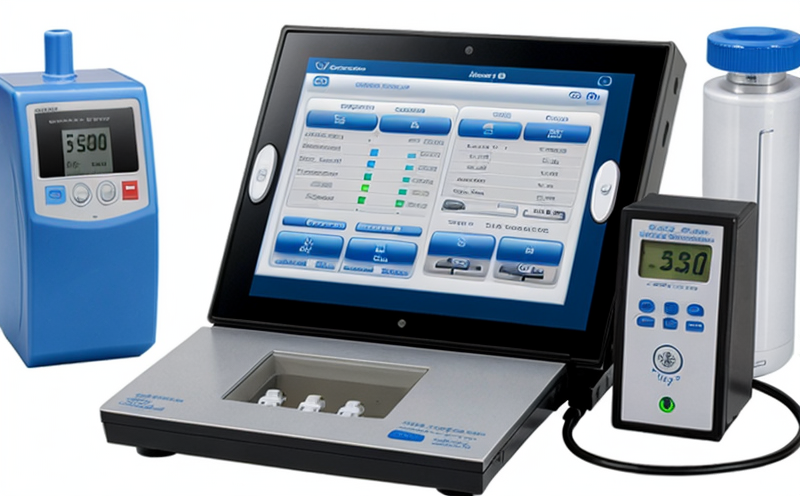User Interface Usability Testing in Infusion Devices (IEC 62366)
The usability of an infusion pump or drug delivery system's user interface is critical to patient safety and clinical effectiveness. The International Electrotechnical Commission’s standard IEC 62366, titled "Medical devices—Application of usability engineering to medical devices," provides a framework for ensuring that the design process incorporates user-centered considerations throughout product development. This service focuses on conducting rigorous testing to ensure compliance with this standard, particularly in relation to the user interface (UI) aspects.
IEC 62366 emphasizes that the usability of an infusion device is not merely a technical issue but also involves human factors, cognitive science, and ergonomics. Compliance with these guidelines can significantly enhance patient safety by reducing errors due to misinterpretation or misuse of the device's interface. This testing ensures that healthcare professionals and patients can efficiently and safely use the device, thereby minimizing potential risks associated with improper operation.
The testing process involves several stages, including requirement analysis, design review, prototyping, and post-market surveillance. Each stage is designed to identify and mitigate usability issues early in the development cycle when corrections are less costly. For infusion pumps specifically, this includes evaluating how easily users can navigate through menus, understand prompts, and locate critical functions such as setting dose rates or selecting medication types.
During testing, we employ various methodologies tailored to assess different aspects of usability. These may include:
- Usability walkthroughs
- User interviews
- Think-aloud protocols
- Pilot studies with real users
- Analysis of error rates and recovery times
The goal is to identify potential flaws that could lead to user confusion, mistakes, or suboptimal performance. By addressing these issues early in the design phase, manufacturers can improve their products' overall usability, which ultimately translates into better patient outcomes.
Our team leverages advanced simulation software and real-world scenarios to recreate typical usage conditions under controlled lab settings. This allows us to evaluate how well the device meets user expectations across various demographics and clinical situations. Additionally, we ensure that our tests comply with IEC 62366 requirements for labeling, instructions for use, and training materials.
The importance of this testing cannot be overstated in today's rapidly evolving healthcare landscape. As technology continues to advance, so too must our methods for ensuring that new medical devices are both safe and effective when used by real people. By adhering strictly to IEC 62366 standards during development stages, manufacturers can demonstrate their commitment to quality assurance while also safeguarding public health.
Why It Matters
User interface usability testing in infusion devices is essential for several reasons:
- Patient Safety: Ensuring that the design of an infusion pump or drug delivery system's user interface is intuitive and easy to use helps prevent errors that could lead to adverse events.
- Regulatory Compliance: Adhering to international standards like IEC 62366 demonstrates a company’s commitment to quality and safety, which can positively impact regulatory approvals.
- Improved Patient Outcomes: When patients and healthcare providers find it straightforward to operate these devices correctly, they are more likely to achieve the intended therapeutic effects safely and effectively.
- Enhanced Usability: By identifying and rectifying usability issues early in the design process, manufacturers can create products that meet user needs better, leading to higher satisfaction rates among end-users.
In summary, conducting thorough usability testing not only ensures regulatory compliance but also contributes significantly to enhancing patient safety and overall treatment efficacy. It plays a crucial role in developing reliable medical devices capable of meeting both clinical and practical requirements.
Eurolab Advantages
EuroLab brings extensive experience in medical device testing, particularly focusing on ensuring compliance with international standards like IEC 62366. Our team comprises experts who possess deep knowledge of both the technical aspects and human factors involved in designing safe and effective infusion devices.
- Comprehensive Expertise: Our specialists are well-versed not only in mechanical engineering but also in cognitive science, ergonomics, and human factors.
- State-of-the-Art Facilities: We offer cutting-edge laboratories equipped with the latest technology to simulate real-world usage scenarios accurately.
- Industry Collaboration: EuroLab collaborates closely with industry leaders to stay at the forefront of innovation in medical device development.
- Ethical Considerations: We prioritize ethical considerations throughout our testing processes, ensuring that all tests are conducted responsibly and respectfully towards participants.
In summary, EuroLab's combination of expertise, facilities, industry relationships, and ethical practices sets us apart as a premier choice for comprehensive infusion device usability testing services. By partnering with us, you gain access to unparalleled resources and support in meeting stringent regulatory requirements while enhancing product quality.





